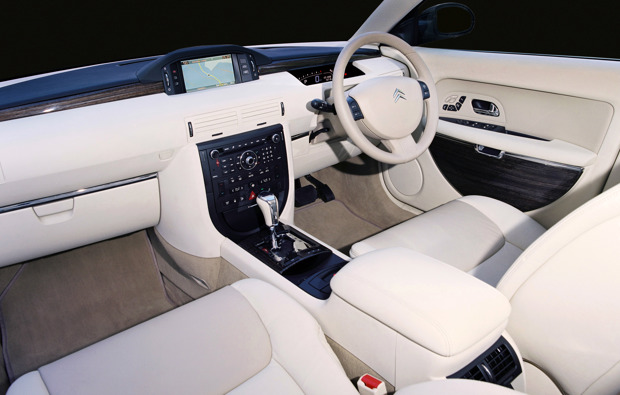Future Classic Friday: Citroen C6
.jpg?width=620)
It was the Citroen that was five years late to the party - and even then, there was an argument that it should never have been invited.
Launched in 2005, the Citroen C6 was the long-awaited replacement for the wedge-shaped Citroen XM. It would become the fourth large, hydraulically sprung Citroën, in a line that began with DS, via CX. Indeed, Citroen made no secret of the fact the Citroen C6 had heritage behind it.
The idea of the car was previewed at the 1999 Geneva Motor Show as the Citroen Lignage concept car - a word that means the same in French as it does in English (lineage). But at the time, it was nothing more than an heir apparent.
Citroen had been badly stung by the Citroen XM. It was a car that, in many respects, was wonderful. Bold, striking, cosseting to drive and as bonkers as the world had come to expect a big Citroen to be. It was also a car that fell at the first hurdle.
Great it may have been, but Citroen's marketeers pointed the car at the mainstream exec market. An alternative, if you like, to a Ford Granada or Vauxhall Carlton.
The Citroen's complexity and horrendous reliability record, coupled to poor fuel consumption and high running costs, meant it quickly fell out of favour with fleet managers.
The public weren't enamoured, either and so the Citroen XM never really made the grade. As a result, while Citroen's impassioned design team wanted to get the Citroen XM replacement out in 2000 or 2001, pretty much as soon as its predecessor was put out to pasture, the money men approached the notion with a degree of trepidation.
.jpg?width=620)
After all, parent company PSA already had the Peugeot 607, which may have been indifferent, but was perfectly capable of French ministerial duty alongside the equally mundane Renault Safrane.
Undettered, those within Citroen who wanted the Citroen C6 went back to the drawing board and refined their concept. If the car wasn't going to be mainstream, then they'd make it more individual. An exclusive and expensive car for those that wanted to be different.
And their argument won the day, thanks to some lovely attention to detail, including hydraulically-operated door pockets, TGV-style sliding rear seats and a self-cleaning concave rear window - a feature stolen straight from the Citroen CX.
After a protracted gestation period of more than five years, the Citroen C6 finally arrived. But while the media generally liked it, very few suggested you should buy one. As such, the Citroen C6 became a car that, from the outset, was only really bought by enthusiasts.
From a classic perspective, this has its advantages. In the UK, for example, fewer than 1000 were sold, mostly either 3.0 V6s in a high specification, or 2.7 HDi diesels for people who used them more intensely.
There were also a handful of very late 3.0 HDis, which were arguably more reliable. But with only 600 or so left (many of the UK's cars have been exported to Australia, where it has acquired a cult following), choice is limited.
Of the handful we found for sale, cars with issues started at around £1000, with tidy working examples for double that. At the other end of the scale expect to pay £4000 and up, but as with anything this complex and niche, history and maintenance are crucial.
Did the Citroen C6 - the last ever big hydraulically-sprung Citroen and a car that failed to truly capture the imagination of the British public - actually get it right? Only time will tell. Find a classic Citroen for sale.


